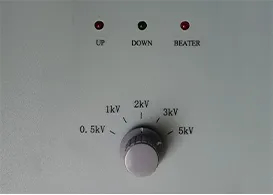 English
English



-
 Afrikaans
Afrikaans -
 Albanian
Albanian -
 Amharic
Amharic -
 Arabic
Arabic -
 Armenian
Armenian -
 Azerbaijani
Azerbaijani -
 Basque
Basque -
 Belarusian
Belarusian -
 Bengali
Bengali -
 Bosnian
Bosnian -
 Bulgarian
Bulgarian -
 Catalan
Catalan -
 Cebuano
Cebuano -
 China
China -
 China (Taiwan)
China (Taiwan) -
 Corsican
Corsican -
 Croatian
Croatian -
 Czech
Czech -
 Danish
Danish -
 Dutch
Dutch -
 English
English -
 Esperanto
Esperanto -
 Estonian
Estonian -
 Finnish
Finnish -
 French
French -
 Frisian
Frisian -
 Galician
Galician -
 Georgian
Georgian -
 German
German -
 Greek
Greek -
 Gujarati
Gujarati -
 Haitian Creole
Haitian Creole -
 hausa
hausa -
 hawaiian
hawaiian -
 Hebrew
Hebrew -
 Hindi
Hindi -
 Miao
Miao -
 Hungarian
Hungarian -
 Icelandic
Icelandic -
 igbo
igbo -
 Indonesian
Indonesian -
 irish
irish -
 Italian
Italian -
 Japanese
Japanese -
 Javanese
Javanese -
 Kannada
Kannada -
 kazakh
kazakh -
 Khmer
Khmer -
 Rwandese
Rwandese -
 Korean
Korean -
 Kurdish
Kurdish -
 Kyrgyz
Kyrgyz -
 Lao
Lao -
 Latin
Latin -
 Latvian
Latvian -
 Lithuanian
Lithuanian -
 Luxembourgish
Luxembourgish -
 Macedonian
Macedonian -
 Malgashi
Malgashi -
 Malay
Malay -
 Malayalam
Malayalam -
 Maltese
Maltese -
 Maori
Maori -
 Marathi
Marathi -
 Mongolian
Mongolian -
 Myanmar
Myanmar -
 Nepali
Nepali -
 Norwegian
Norwegian -
 Norwegian
Norwegian -
 Occitan
Occitan -
 Pashto
Pashto -
 Persian
Persian -
 Polish
Polish -
 Portuguese
Portuguese -
 Punjabi
Punjabi -
 Romanian
Romanian -
 Russian
Russian -
 Samoan
Samoan -
 Scottish Gaelic
Scottish Gaelic -
 Serbian
Serbian -
 Sesotho
Sesotho -
 Shona
Shona -
 Sindhi
Sindhi -
 Sinhala
Sinhala -
 Slovak
Slovak -
 Slovenian
Slovenian -
 Somali
Somali -
 Spanish
Spanish -
 Sundanese
Sundanese -
 Swahili
Swahili -
 Swedish
Swedish -
 Tagalog
Tagalog -
 Tajik
Tajik -
 Tamil
Tamil -
 Tatar
Tatar -
 Telugu
Telugu -
 Thai
Thai -
 Turkish
Turkish -
 Turkmen
Turkmen -
 Ukrainian
Ukrainian -
 Urdu
Urdu -
 Uighur
Uighur -
 Uzbek
Uzbek -
 Vietnamese
Vietnamese -
 Welsh
Welsh -
 Bantu
Bantu -
 Yiddish
Yiddish -
 Yoruba
Yoruba -
 Zulu
Zulu
capacitance and dissipation factor test of transformer
Capacitance and Dissipation Factor Testing of Transformers
Transformers play a critical role in electrical power systems, serving as the backbone for voltage regulation and energy transmission. To ensure their efficient and safe operation, regular testing and maintenance are essential. Among various diagnostic tests conducted, capacitance and dissipation factor (DF) testing stand out as key indicators of insulation condition and overall transformer reliability.
Understanding Capacitance and Dissipation Factor
Capacitance refers to the ability of a transformer’s insulation system to store electric charge. The dissipation factor, often represented as DF or tan(δ), quantifies the energy loss within the insulation due to dielectric losses when it is subjected to an alternating electric field. The DF value is a crucial parameter that reflects the quality of the insulating materials used in the transformer.
The measurements of capacitance and dissipation factor provide valuable insights into the condition of a transformer's insulation system. A higher dissipation factor indicates more significant energy losses, which could result from insulation deterioration, moisture ingress, or manufacturing defects. Therefore, understanding these values is essential for assessing whether a transformer requires maintenance or has reached the end of its operational life.
The Testing Procedure
Capacitance and dissipation factor testing is typically performed using specialized test equipment, such as capacitance bridges and power factor testers. The procedure involves connecting the test instrument to the transformer’s bushings, where the capacitance and DF are measured under specific voltage conditions. It is essential to carry out the testing at the transformer’s rated voltage or under controlled conditions to obtain accurate results.
capacitance and dissipation factor test of transformer

Data collection should be meticulous, and measurements should be taken over time to detect trends. By comparing results across different testing cycles, operators can identify any deviations from normal values. This trend analysis helps in predicting potential failures and planning maintenance activities effectively.
Interpreting the Results
Standard capacitance values for transformers usually range from a few hundred picofarads to several microfarads, depending on their size and design. The dissipation factor is typically low, with acceptable values being less than 0.5% for new equipment. A sharp increase in DF or significant changes in capacitance over time can point to insulation problems, such as partial discharge activity, moisture absorption, or thermal degradation.
When interpreting these results, engineers must consider various factors, including the age of the transformer, its operating conditions, and the previous maintenance history. A thorough analysis can lead to informed decisions regarding transformer repair, replacement, or continued operation.
Conclusion
Capacitance and dissipation factor testing is an essential practice in the maintenance of transformers. These tests provide critical information about the insulation health and operational integrity of the equipment. By regularly monitoring capacitance and DF, utilities can mitigate risks, extend the life of their transformers, and ensure the reliable delivery of electrical power.
Routine testing, coupled with a solid understanding of the indicators and trends, positions power systems to function efficiently while preventing unexpected outages and ensuring safety. Investing in comprehensive testing regimes is thus not just prudent but necessary for optimal transformer management.
-
Exploring the Main Types of Industrial Endoscopes and Their Applications Across IndustriesNewsJul.04,2025
-
Testing Equipment Industry Sees Major Advancements in 2025: Smart & Precision Technologies Lead the WayNewsJun.06,2025
-
Applications of Direct Current Generators in Renewable Energy SystemsNewsJun.05,2025
-
Hipot Tester Calibration and Accuracy GuidelinesNewsJun.05,2025
-
Digital Circuit Breaker Analyzer Features and BenefitsNewsJun.05,2025
-
Benefits of Real-Time Power Quality Monitoring Devices for Industrial EfficiencyNewsJun.05,2025



